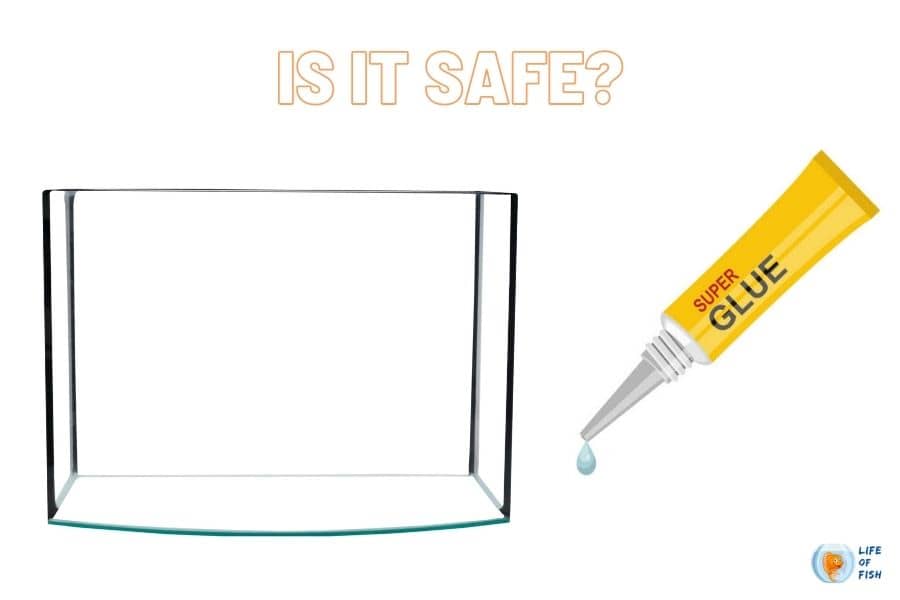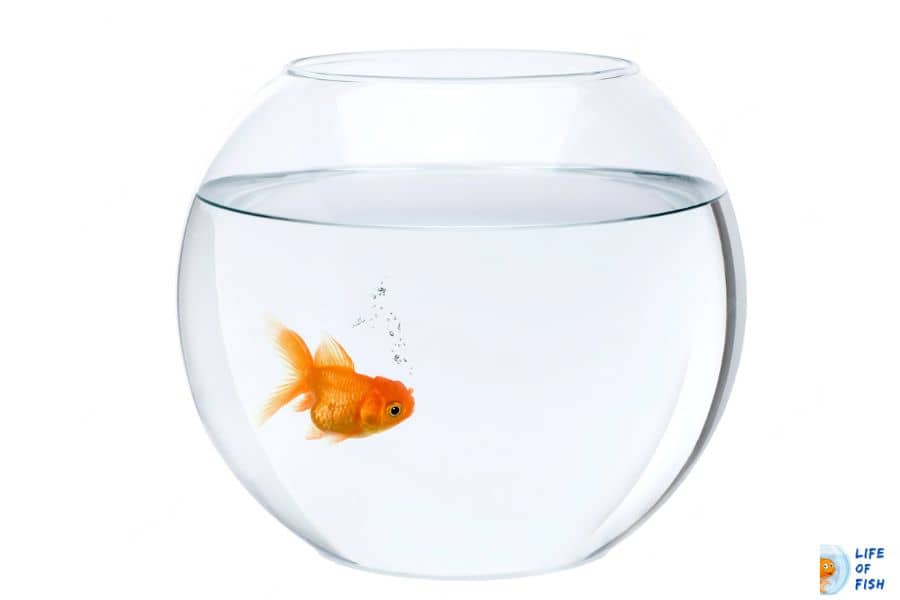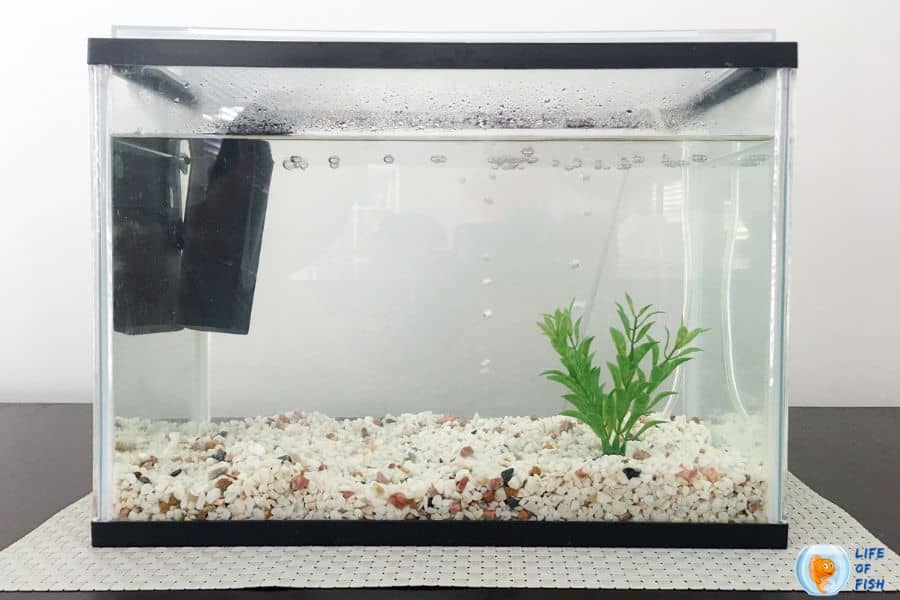Superglue is one of the strongest glues on the market, and it can be tempting to use it for your aquarium repairs. But, Is Super Glue Aquarium Safe? let’s find out the answer here. Maintaining an aquarium requires bonding and fixing some materials here and there. For this, we need a strong glue that can fix the materials quickly and be safe for the fish.

Aquariums are delicate ecosystems, and even a small change can have a big impact. That’s why it’s essential to be careful about what kind of glue you use. Some glues contain chemicals that can be harmful to your fish.
Is Super Glue Aquarium Safe?
Jump To
- 1 Is Super Glue Aquarium Safe?
- 2 Super Glue Vs. Super Glue Gel (Cyanoacrylate vs. Ethyl Cyanoacrylate )
- 3 Other Super Glue Brands
- 4 Where Can I Use Super Glue In My Aquarium?
- 5 In My Tank, Where Should I Not Use Super Glue?
- 6 How Do I Use Super Glue In My Aquarium?
- 7 Tips To Use Super Glue In Aquariums
- 8 Conclusion
Super glue is safe for fish tanks because of its main active ingredient, Cyanoacrylate. This material forms strong and stable connections when it comes into touch with water. It basically polymerizes in 30 to 45 seconds. Because water is an accelerant (or catalyst) of the curing process, Cyanoacrylate is by definition an aquarium-safe glue.
This means that when the glued object is placed in the tank, the water will cause the glue to cure and become inert. As a result, there is no hazard of the glue leaching chemicals into the water or harming the fish. If you do use super glue in a fish tank, be sure to wait out the curing process for 5 to 7 minutes before adding the glued object to the tank.
Is Super Glue Safe For Aquarium Plants?
As mentioned before, super glue becomes inert and safe once cured. This applies to aquarium plants as well. If you need to glue some plants to driftwood or rocks in your aquarium, you can do so without fear of the plants being harmed. Just wait for the glue to cure before adding the plants to the tank.
Read Next: Is Gorilla Glue Safe For Plants? ( Yes And Few More Tips )
Is Super Glue Safe For Aquarium Inhabitants?
Cyanoacrylate is, in fact, a safe glue to use for aquarium inhabitants like snails or turtles. However, Cyanoacrylate alone is ineffective in gluing these animals’ parts. For this purpose, there is a Cyanoacrylate variant called “ethyl Cyanoacrylate.” Ethyl Cyanoacrylate comes in gel form and is totally safe for aquarium inhabitants. You can use this glue to bond the cracked shells of turtles or snails without harming them.

Read Next : Is Hot Glue Toxic To Turtles? (No, But You Should Know This)
Super Glue Vs. Super Glue Gel (Cyanoacrylate vs. Ethyl Cyanoacrylate )
While both super glue and super glue gel are safe for aquariums, we recommend using the gel form. The main advantage of super glue gel is that it doesn’t run or drip like regular super glue. This makes it considerably easier to handle and less prone to spill. The gel form is also less likely to cause irritation if it comes into contact with your skin. So, if you’re looking for aquarium-safe glue, we recommend using super glue gel.
Read Next : Is Krazy Glue Safe For Aquariums ? | A Crazy Answer For You |
Other Super Glue Brands
While Super glue is the most popular brand of Cyanoacrylate, other brands are also available. Let’s check if each of these brands is safe for aquariums.
Is Loctite Super Glue Aquarium Safe?
Yes, Loctite super glue is safe for aquariums. This brand also uses Cyanoacrylate as its main active ingredient. So, you can use it to bond materials in your aquarium without worrying about harming the fish.
Is Krazy Glue Aquarium Safe?
Yes, Krazy glue is safe for aquariums. Like other super glues, it uses Cyanoacrylate as its main active ingredient. So, it is perfectly safe to use in fish tanks.
Is Gorilla Super Glue Aquarium Safe?
Yes, Gorilla super glue is safe for aquariums. Gorilla Super glue (note the word SUPER) uses Cyanoacrylate as its main active ingredient. So, it is perfectly safe to use in fish tanks.
Is Uhu Super Glue Aquarium Safe?
Yes. Uhu super glue is safe for aquariums. Uhu also uses Cyanoacrylate as its main active ingredient. So, it is perfectly safe to use in fish tanks.
IMPORTANT: “Aquarium safe” super glues are those that use Cyanoacrylate as their main active ingredient. If the super glue product you intend to use has Cyanoacrylate, it is safe to use. If it doesn’t have Cyanoacrylate, don’t use it in your aquarium. With that said, we recommend only using super glues that are specifically designed for aquariums. These products have been tested and proven to be safe for use in fish tanks.
IMPORTANT: Some brands mentioned above have several glue varients. Not all of these variants are safe for aquariums. So, check the ingredients list before using any of these products in your tank.

Read Next : Is Epoxy Glue Safe For Aquariums ? (2 Part Epoxy Aquarium Safe)
Where Can I Use Super Glue In My Aquarium?
Super glue is a strong adhesive that dries hard, making it an ideal choice for bonding together different materials. However, it is not fitting for use as a sealant because it is brittle and will leave small gaps. This means that super glue is only suitable for bonding small areas together. The strength of the bond created by super glue depends on the surface area that is glued together.
The greater the surface area of your object, the weaker the bond. Super glue should, therefore, only be used to bond small areas together. If you need to bond two large surfaces together, you should use a different adhesive like silicone sealant.
You can use super glue to glue and fix things like,
- Aquatic plants
- Rocks
- Live Rocks
- Coral frags
- Small decorations
However, super glue will only work if you use it to fix smaller areas. For example, if you have a large rock that needs to be glued together, super glue will not work. In this case, you will need to use a two-part epoxy resin.
In My Tank, Where Should I Not Use Super Glue?
Although super glue is a fast-acting, strong glue, it can not maintain a seal. This means that You should not use it in areas where a watertight seal is required, like,
- Between the glass panels of your aquarium
- On the inside of your aquarium
- To seal leaks
To create a watertight seal, you should use aquarium-safe silicone sealant.
How Do I Use Super Glue In My Aquarium?
Using super glue in your aquarium is very simple. Just follow these steps,
- Clean both surfaces that you intend to glue together. Before applying the super glue, the surface must be clean and dry (some moisture is ok).
- A modest amount of super glue should be applied to one surface.
- Bring the two surfaces together and hold for 30 seconds.
- Leave the glued area to dry for 24 hours before adding water.
That’s it! You’ve now successfully used super glue in your aquarium. If you need to remove the super glue from your aquarium, just use a razor blade to scrape it off.
Read Next : Is Hot Glue Aquarium Safe? 12 Secrets Only A Handful Of People Know
Tips To Use Super Glue In Aquariums
From experience we gathered, here are some tips that might come in handy.
Use the gel variant — you don’t want to use the liquid variety since it will spread too much. I prefer to buy in gel form since it is much easier to control.
Use a small amount — A little goes a long way with superglue. You don’t need to use it a lot. A small amount will do the trick.
Don’t apply it to underwater objects — It is better to apply the superglue to the object you want to glue BEFORE putting it in the water. This will give the glue time to dry before it gets wet.
Give it time to dry — Do not add water to the tank immediately after applying the superglue. Wait for about 24 hours to allow the glue to dry completely. Although super glue dries quickly, it takes some time to cure completely.
Conclusion
Super glue is a strong adherent that can be used to bond different materials together. However, it is not ideal for use as a sealant because it is brittle and will leave small gaps. This means that super glue is only ideal for bonding small areas together.
You can use super glue safely in your aquarium to glue and fix things like aquatic plants, rocks, live rocks, coral frags, and small decorations. However, you should not use it to seal leaks or bond large surfaces. To create a watertight seal, you should use aquarium-safe silicone sealant.
Read Next : Pros And Cons Of Sand In Aquarium (Things You Didn’t Know)
